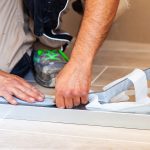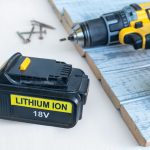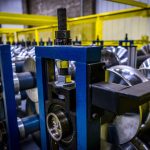
Pre-engineered metal building assemblers that are committed to excellence
 If you read my column, you know I am an avid supporter of the professionalization of our trade. I don’t want my guys to be just another construction worker, drifting from job to job. I want them to hold their heads high and proudly proclaim, “I am an assembler of pre-engineered metal buildings.”
If you read my column, you know I am an avid supporter of the professionalization of our trade. I don’t want my guys to be just another construction worker, drifting from job to job. I want them to hold their heads high and proudly proclaim, “I am an assembler of pre-engineered metal buildings.”
My company, Thomas Phoenix International Inc., Eastampton, N.J., researched and implemented an apprenticeship program that was approved by the State of New Jersey and the U.S. Department of Labor. We did this after being told it could not be done. Our apprenticeship program was used as a model for national guidelines that are now available through the Metal Buildings Institute.
I know my company has invested in quality, safety, training and education programs. I also know there are many other good quality erectors that have similarly done all the right things. But how does a manufacturer know? How does a developer, general contractor, architect know? How do we differentiate ourselves?
In 2013, the metal building industry constructed more than 300 million square feet of space, almost 50 percent of the low-rise, nonresidential market across the United States. Financially, this represents more than $2 billion in steel shipments.
Ninety percent of this volume was produced by manufacturers that have achieved and maintained International Accreditation Service Inc. (IAS) accreditation under the inspection programs for manufacturers of metal building systems. This accreditation works to establish criteria that demonstrate a company has the personnel, organization, experience, knowledge, quality procedures and commitment to fabricate in accordance with specified procedures.
Currently, materials fabricated by these manufacturers are shipped to project sites and assembled by a largely unregulated market of contractors and erectors. There is not, currently, a single certifying or accreditation process by which these contractors and erectors of metal building systems can pursue, or be held accountable. Note my emphasis on “currently.”
The Metal Building Contractors and Erectors Association (MBCEA) is a trade association created in 1968 to provide programs and services to the contractor and erector segment of the metal building systems industry. The mission of the MBCEA is to support the professional advancement of metal building contractors, erectors and the industry.
The IAS is a nonprofit, public-benefit corporation and a leading accreditation body in the United States. Internationally recognized accreditation by IAS makes it easier to market products and services both inside and outside the United States.
Together, the MBCEA and IAS-along with input from all levels and areas of the pre-engineered metal building industry-are developing an independent accreditation program that differentiates those contractors and erectors that are committed to safety, training and education: those that perform at a higher level.
The accreditation program will be focused on and be limited to erectors and contractors who are substantially engaged in the assembly of pre-engineered metal buildings as defined in Department of Labor Code 801.381-010 and AIMS Code 0877 and further described for our purposes as companies that erect pre-engineered metal buildings according to specifications and erection drawings as prepared by building manufacturers.
The MBCEA recognizes that this accreditation program needs to be sufficiently meaningful to carry weight at all levels of the pre-engineered metal building industry. Accredited entities complying with these criteria will need to have demonstrated that they have the personnel, organization, experience, knowledge, quality procedures and commitment to assemble metal building systems in accordance with the specified requirements.
To ensure the program is meaningful, relevant and widely accepted, the MBCEA has obtained input from erectors, manufacturers, construction officials and industry experts for the development of the criteria. It is the goal of the MBCEA to implement a fully accredited program later this year.
This accreditation will provide a benefit to the public by helping to identify contractors who are committed to quality workmanship, safety, training and education. Tim Seyler, president of S & S Structures, Blandon, Pa., and current president of the Metal Buildings Institute, is not only chairing the technical committee that is developing the standards, he has also volunteered his company to be the first guinea pig as we work out the finer details of the program.
Response and support from the industry have been overwhelming. Frankly, I believe this program will be a game changer for our industry. Interested in knowing more? Sign up for our MBCEA newsletters at www.mbcea.org.
# # #
Gary T. Smith is president of Thomas Phoenix International Inc., Eastampton, N.J., and an outspoken supporter of apprenticeship, training, safety and education for the Metal Buildings Institute. He is one of the original founders of the MBCEA-MAD and trustee of the MBI. Caption: MBCEA chair Gary Smith and past chair Mary Farrar address the implementation of an accreditation program for metal building erectors






